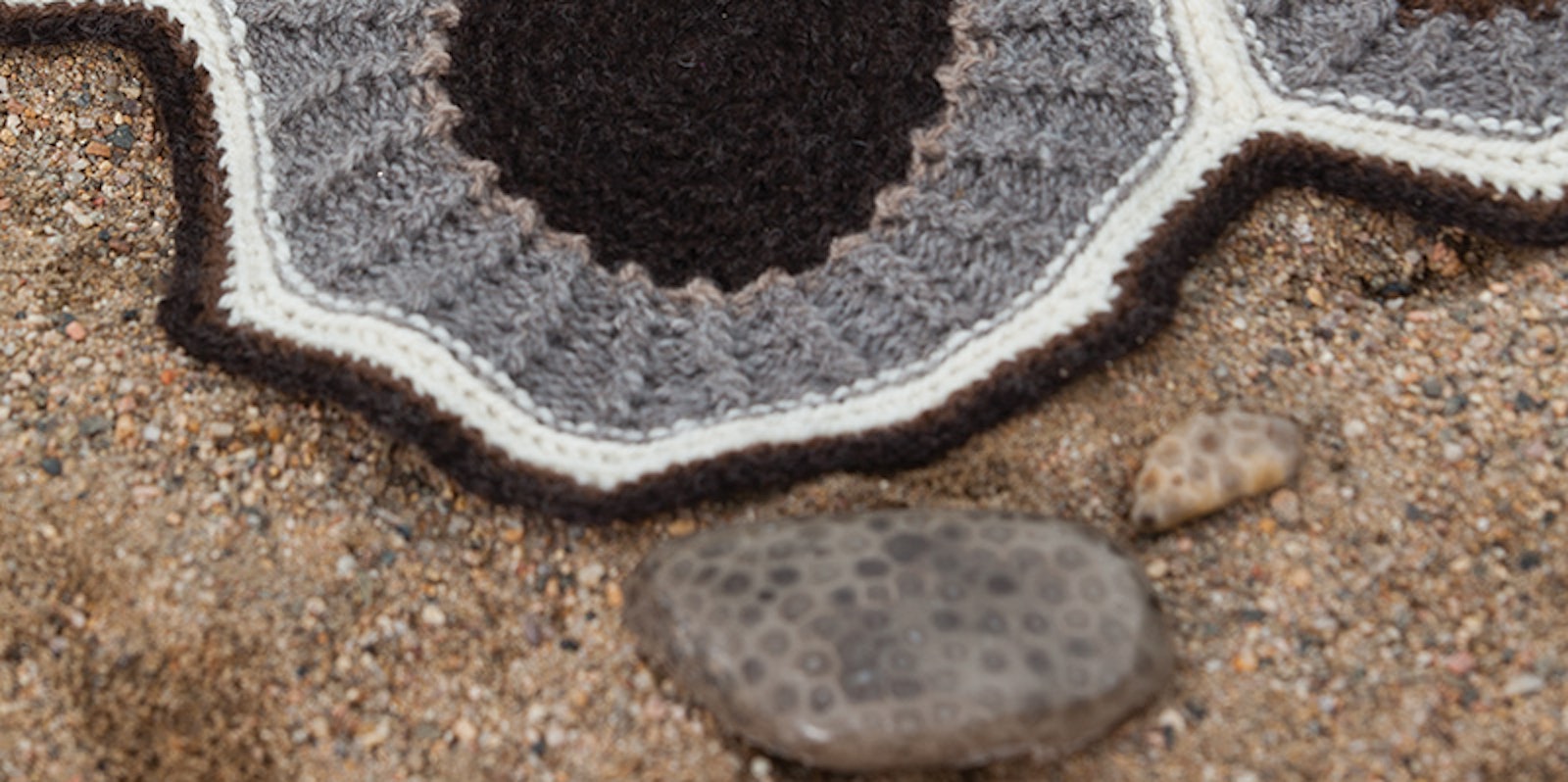At first glance, Amy Tyler's Wool into Stone Afghan makes you do a double take. How do you create those odd organic shapes—with complex increases and decreases, or some other way? Making this handspun afghan is both simpler and weirder: knit a variety of textured circles and join them with basic crochet seams. The knitted medallions pull and distort each other into irregular hexagons.
Wrap up in Amy Tyler's Wool into Stone Afghan from Spin Off's Winter 2015 issue. Photos by Joe Coca.
Amy loves her Michigan home, and the curious Petoskey stone is the official state stone. The stone gets its name from the Odawa word petosegay, which means "sunbeams of promise." Amy explains the design inspiration of her uniquely shaped handspun afghan, which uses the varied shades of Shetland wool to evoke the colors of the stones.
The Petoskey stone, Hexagonaria percarinata, serves as the official state stone of Michigan.
- The important elements of a knitted Petoskey stone include a nonuniform shape, allowing four- to nine-sided polygons; a circular center that is usually darker than the outer edge; lines that start outside the circular center and radiate outward to the border; and a light-colored border.
- Each of the medallions that make up these afghans is knitted in a circle from two to three colors. The rough hexagonal shapes that result are due to the way the medallions are crocheted together and some strong blocking of the final piece. The center portion of each circle is worked in garter stitch to accentuate the shape, and on the outer portion, a two-stitch twist on a background of reverse stockinette mimics the radiating lines in Petoskey stones. The white yarn is reserved for the border of each medallion and for crocheting the medallions together.
Amy's Wool into Stone Afghan.
Although Amy's palette of undyed wool gives her handspun afghan its soothing natural feel, you can cast on your own variation of the Wool into Stone Afghan in any colors you like. I imagine knitting a psychedelic adaptation in hand-dyed handspun to fuel my naptime dreams. What would your afghan look like? If you start one, you could finish one in time for Rock (or Roc) Day, which falls on January 7.
—Elizabeth




